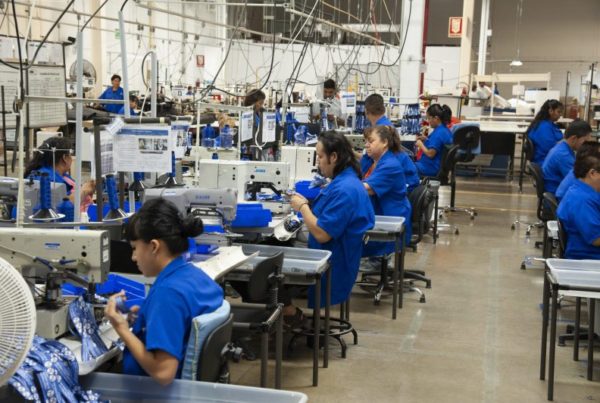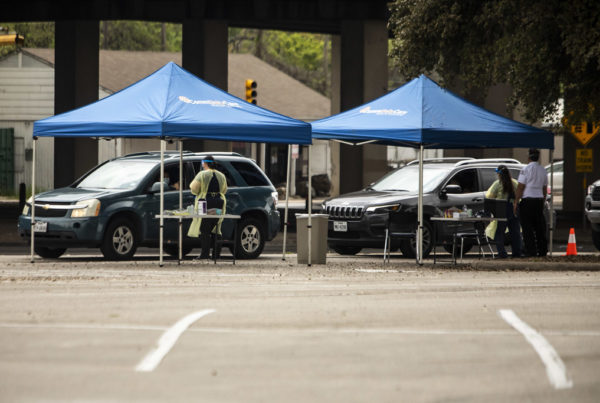From The Texas Tribune:
Just two months ago, Titus County in northeast Texas had a high-traffic medical center with 800 employees, an average of 65 patients in the emergency room and an entryway manned by senior volunteers selling buttery popcorn.
Now, ER traffic has slowed to a crawl. Ten percent of the staff is out of work. And the hospital’s chief executive officer, Terry Scoggin, says the 108-bed facility is sitting on just a few months of cash — even with new money it’s getting from a federal stimulus package.
It’s not alone.
As hospitals brace for a potential influx of COVID-19 patients, some facilities are shedding staff members, cutting hours and hemorrhaging money. It’s an unexpected side effect of a steep drop-off in lucrative surgeries, meant to free up hospital bed space and preserve protective equipment for the coronavirus outbreak.
An order from Gov. Greg Abbott — which postponed all procedures not “immediately medically necessary” — dovetailed with public health warnings that urged patients to delay care and avoid medical facilities where they could be exposed to the virus. Emergency rooms have reported fewer arrivals as Texans hunker down in compliance with stay-at-home orders.
Staff members at Titus Regional Medical Center promote the message: “Stay home, stay healthy.”
“We’re encouraging people not to come to the hospital right now unless they are really sick, and that’s the reality,” said Scoggin, who’s worked in health care for eight years. “They’re not coming. There’s no revenue there. So you’re going to have to cut back on expenses and consolidate.”
Emergency room visits at Titus dropped from about 65 a day to a low of 25. With some 40 to 50 procedures canceled a week, revenue has declined 33%. Scoggin estimates the virus will cost Titus $3.3 million, about 14 days of cash.
Worried that the hospital would have to go another month without the revenue-driving procedures, Scoggin’s team sat down in April and told 80 employees, largely working managerial, administrative and ambulatory positions, that they would be laid off or furloughed. Those who remain are working harder than ever before, Scoggin said.
“Once we get through this, we’ll make it up,” he said. “It’s different with a small town — we furloughed and terminated friends of mine. … Those are calls that were hard for me to make.”
Furloughs and cuts
Rural hospitals are particularly vulnerable to financial blows. But doctors’ offices and large hospital systems have not been immune to the pressures of the pandemic.
Some, like Dallas-based Tenet Healthcare Corp., are furloughing or laying off staff members. Others, like Methodist Healthcare in San Antonio, are redeploying employees with reduced hours or offering 70% of their base pay. Quorum Health Corp, the parent company of Big Bend Regional Medical Center, filed for bankruptcy.
Texas senators have already asked that a “staged resumption of non-emergent surgical care” be considered.
Lisa Bielamowicz, a physician and the president of the consulting firm Gist Healthcare, said some hospitals are reducing head counts to match a reduced volume in patients. But others are “being really aggressive” about trying to keep people on their payroll, including by retraining them or being more flexible with paid leave benefits.
Hospitals have told her 50% or more of their beds are empty now, compared with usual rates, and some individual health systems have estimated a loss of tens or even hundreds of millions of dollars in their projections.
“Houston and Dallas are starting to see more COVID patients, but for a lot of hospitals in Texas and around the country, they’re still awaiting the surge,” Bielamowicz said. “At the same time, they now have been looking at a month or more of their surgery centers and hospitals literally emptying of patients.”
Legislation passed by Congress in March includes a $100 billion federal aid package for health care providers.
Moody’s Investors Service, which changed to negative the not-for-profit health care sector’s outlook in March, said the federal infusion offers “modest relief” but would “likely be insufficient” if elective procedures remain suspended into late spring or summer. The ratings agency projected postponed services would likely reduce hospital revenue 25% to 40% per month on average.
Lisa Goldstein, associate managing director for not-for-profit Hospitals at Moody’s, said $100 billion “sounds like a lot of money,” but it’s the typical amount spent monthly on hospital services nationwide, according to the government. “Economically, hospitals are in cash preservation mode. If they do have liquidity, they’ve been holding on to it — so no plans to build a new tower or a clinic or an ambulatory center,” for example, she said.
Hospitals are establishing lines of credit with banks and asking the government to advance Medicare payments, Goldstein said.
Of $30 billion in federal aid being doled out so far, $2.1 billion will go to 24,300 Texas providers. The infusion was distributed based on past Medicare billings, leaving hard-hit areas clamoring for a greater share of the fund and offering less to facilities that are paid more by other sources, like children’s hospitals and hospitals that treat large numbers of uninsured and Medicare Advantage patients.
Among those is Titus.
“We have 31% adult uninsured in our [county], so we didn’t get as much on this first round,” said Scoggin, who said the federal infusion added eight days of cash for the hospital. Subsequent payouts are expected to prioritize rural health care facilities, he said.
He feels better, he said, but knows that “it will change us. … Our goal is to make sure we have a viable health system for the long term.”
Financial pressures
At a rural hospital like Titus, funding is a challenge even without a pandemic.
Scoggin vividly remembers the night — New Year’s Eve in 2014 — that he took over ambulatory services for surrounding counties because two rural hospitals had folded.
But in a 30-year career, he’s never experienced anything like this, he said, and has never been more tired or anxious.
The region is coming up on tornado season, and he’s worried one will blow through just as the facility is preparing for the virus and squeezed by financial pressures. He’s concerned about how taxing the work is for his doctors and nurses.
And then there’s the “nerve-wracking, scary situation” that’s in the back of his mind constantly: one person who passes the virus to patients and employees, potentially devastating the workforce.
The financial pressures hit health care providers too.
One nurse anesthetist who works for several medical facilities in Dallas said she’s spending as little money as possible because her hours and pay have been cut in half.
She knows nurses who may sign up to work in New York — the epicenter of the virus in the U.S. — to make up for pay that dropped dramatically after the bar on elective procedures went into effect, she said. She’s volunteered to work in busier units, like the ICU or emergency room, but understands the draw.
“It’s very tempting for people that don’t have a lot saved up right now,” said the nurse anesthetist, who said she’s received an email advertising job placements on the East Coast for up to $13,000 a week.
A nurse who works in a neuro unit in a Houston-area hospital was placed on call — meaning she was told at 4:30 a.m. if she needed to come in to work that day — for three shifts before learning the unit would be temporarily closed. She told her manager she needed the work and was moved to different departments.
The hospital recently offered employees with reduced hours 75% of their usual pay. They can use their paid leave to make up the difference if they want, she said.
Both providers asked for anonymity because they did not have authorization to speak with the media.
Titus has had a few COVID-19 patients, who were treated in a designated area on the third floor. But the facility feels emptier than before.
The senior volunteers selling popcorn were some of the first to go because of the risk the virus poses to elderly people. A restriction on visitors, meant to limit possible exposure to the coronavirus, means patients lie in their beds alone, with no family nearby.
n anticipation of more cases, old ventilators have been repaired, and employees are brushing up on medical skills and learning how to staff the ICU or emergency room. Residents and local businesses have also responded to requests from Scoggin for more protective gear, sending over homemade masks and food for the health care workers.
Despite the pressure, Scoggin thinks Abbott’s executive order was a good call at the time.
“At the end of the day, I think the right decision was made because we have mitigated a large outbreak in our northeast Texas” region, he said. “The question is going to be … when and how do you turn it on?”
Disclosure: Tenet Healthcare Corp. has been a financial supporter of The Texas Tribune, a nonprofit, nonpartisan news organization that is funded in part by donations from members, foundations and corporate sponsors. Financial supporters play no role in the Tribune’s journalism. Find a complete list of them here.
If you found the reporting above valuable, please consider making a donation to support it here. Your gift helps pay for everything you find on Texasstandard.org and The Texas Tribune. Thanks for donating today.














